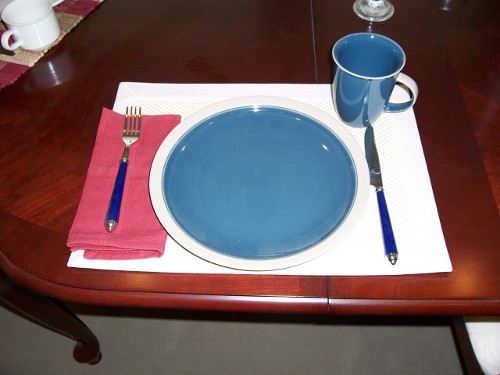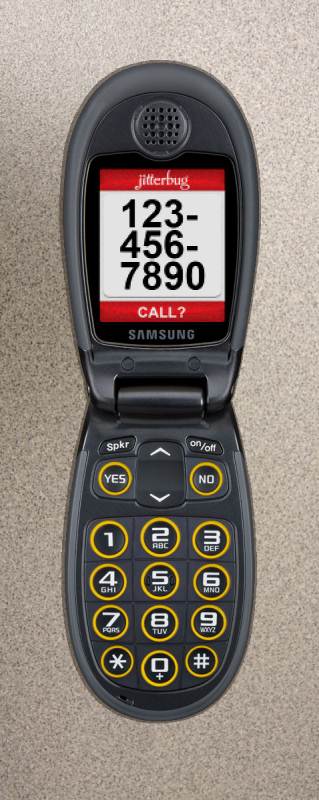Since the debut of the VictorReader Stream and the introduction of downloadable audio books from the National Library Service, the market for modern digital book and audio players has exploded. The Milestone 312 from Bones is the latest entry in this crowded market. In addition to the audio and book playback features typical of these units, the capabilities of the Milestone can be expanded with hardware and software add-ons including a color identifier, bar code scanner, and agenda program. Bones is highly regarded for their digital audio players, especially in Europe, where the Milestone is one of the most popular digital players. In this review, we put the unit through its paces, running version 3.20 of the firmware.
We've offered reviews of other digital book players in previous issues of AccessWorld. While we'll occasionally refer to these models for comparisons, you should consult these articles for thorough reviews of these products.
The Player
When compared to other units, perhaps the most noticeable difference in the Milestone is its relative lack of buttons: the unit has only six buttons for controlling its functions.
Those familiar with the Milestone 311 will recognize the layout of the buttons on the unit, as this latest model has a very similar form factor. With the unit oriented face up, five buttons form a plus sign on the upper half of the unit's face, each with a distinct tactile design. Play/Pause is the concave circular button in the center; to the left and right are two arrow-shaped buttons used for rewinding and fast forwarding playback as well as adjusting menu options. Below Play/Pause is the X-shaped Mode button, and above is the O-shaped Record button. A built-in monaural microphone is found in the top left corner of the device; the built-in speaker takes up most of the bottom half of the face.
The sixth button, Select, is solid and circular and protrudes slightly from the top of the unit. A USB 2.0 port and external microphone/line-in jack round out the remainder of the physical features on the top of the unit.
The SD card slot takes up much of the right side of the unit. The Milestone accepts high-capacity cards up to 32GB in size. A standard headphone jack can be found on the bottom of the unit while the RFID tag reader can be found on the unit's back side.
When compared with other players, the Milestone is both much smaller and lighter than its competitors. It measures 3.4 by 2.1 by 0.6 inches (just under 4 cubic inches), making it nearly a third smaller than the BookSense. It weighs a mere 1.7 ounces, less than half the weight of the PlexTalk Pocket and less than a third of the weight of the VictorStream.
What's in the Box
The Milestone package included a standard set of accessories typical for this type of product. In addition to the actual unit, the box included a mini-USB cable, ear buds, power supply, carrying case, printed manual, lanyard, and some sample tags for the Speakout RFID add-on (more on that feature below). Unlike the Milestone 311, braille reference or documentation was not included.
Documentation
The Milestone comes with documentation both in print and loaded on the unit itself. Manuals in several languages can also be downloaded from the Bones website in .txt, .pdf, and DAISY formats. The manual concisely explains the various functions of the unit and also includes a handy shortcut reference at the end of each section. While the manual is generally easy to understand, some sections could be better translated into more readable English.
Loading Content
The Milestone connects to a computer using the included mini- USB cable. Unlike other players, there is no specific folder structure for books, music, or other types of files. You can simply copy your desired files to the unit for listening. There is no special included software included for transferring popular formats to the Milestone, which might present a bit of a learning curve for beginning users who are unfamiliar with copying downloaded books and files between the computer and the device. In our tests, copying files to the included SD memory card was several times faster than copying the same files to the device's internal memory.
General Operation
The Milestone does not include a power switch; it is simply always available for use. Press the Play/Pause button to wake the unit from sleep mode, which takes less than five seconds. If no keys are pressed for 10 minutes, the device automatically returns to sleep mode. In our tests, the sleep mode did not considerably consume battery power.
In its basic form, the Milestone includes three main modes, toggled using the Select key. Pressing Select cycles between audio, books, and alarm. If other add-ons such as the Speakout RFID tag reader are installed, select will also cycle through these modes.
Audio
The Milestone groups any content that is not a DAISY book—i.e., .mp3, .wav, .aac, unprotected .wma, and text files—into the audio portion of the player. While in audio mode, you can browse through files and folders to locate the item you wish to listen to. Pressing the Record button toggles between the unit's internal memory and the SD card while the left and right arrows move through the list of files or folders. Pressing the Mode key selects a folder, while pressing Play/Pause plays the selected file or folder.
While playing, you can press the left or right arrow to move between tracks, or hold down an arrow key to rewind or fast-forward. A quick-jump feature allows for movement to a particular spot in a file, but there is no way to mark your place in a song or file.
Text files are read using a full complement of Acapela voices including Ryan and Heather for U.S. English. Unlike most other players, you can install several voices at once and switch between them at will. On the Milestone, the text files load and play with impressive speed. A test file including several hundred pages of text began playing immediately upon pressing the Play/Pause button. Unfortunately, the list of compatible text formats falls short when compared with other players; the Milestone currently does not support Microsoft Word, rich text, HTML, or braille files.
The Milestone's recording features are impressive and useful. Two recording modes are included, one for taking quick notes and a second for longer recordings. Recordings made using the built-in microphone were clear and easy to understand. A jack is included for connecting an external microphone or a line-in audio source such as a stereo. Several settings are included to control the recording quality and the included noise cancelation.
Books
The books mode allows for the playing of DAISY 2.02 book titles as well as books from the Audible website in both .aa and .aax formats. Bones is making an effort to increase compatibility for U.S.-based book formats, including recently-added support for downloadable books from the National Library Service.
Here, the key functionality is slightly different, with the Mode and Record keys acting as up and down arrows to change between various navigation modes (phrase jump, time jump, bookmarks, etc.) An additional option, the bookshelf, allows you to browse the book titles on your machine. The titles are announced while navigating and can be played with a press of the Play/Pause button.
Depending on the book format, options are included to jump to a specific page or section of a book. Page numbers are entered by holding down the Select key and then pressing the left arrow, Play/Pause, and right arrow keys to increment the hundreds, tens, and ones digits respectively. This is one of the areas where perhaps the lack of a numeric keypad creates some potentially cumbersome usability issues.
We were unable to play books from Bookshare, RFB&D, or the Internet Archive using the books mode on the Milestone. According to the company, some of these formats may be included in future upgrades to the device.
Alarms
This simple mode allows for the setting of an alarm for a specific time. You can set a one-time alarm or one that will go off every day, every weekday, or Monday-Saturday. The Milestone also includes a built-in countdown timer that can be set from 1 to 30 minutes. The setting of alarms was straightforward, using the same menu-driven interface found in the books mode.
Add-on Applications
The Milestone can be made more powerful through the use of add-on software and hardware.
The unit includes a built-in FM radio, which can be activated through an add-on. The radio includes 12 presets, a scan feature, and the ability to record your favorite station. Like other players, your headphones also act as the antenna for the radio, so they must be plugged in to use it. You can, however, plug in a pair of headphones and activate the unit's internal speaker concurrently.
Another available add-on is Agenda, a task scheduler and calendar. In addition to the basic tasks of scheduling and reminding you of upcoming events, Agenda can be used to schedule a recording using the radio or microphone at a specific time, or wake you up by playing a specified file. Both one-time and repeat events can be scheduled, and the program offers several modes for browsing through your agenda.
As mentioned previously, the Milestone includes a built-in RFID reader, used by Speakout, another available add-on. Speakout associates recorded personalized messages with RIFD tags so you can hear the message whenever the tag is scanned. The recordings are stored on the Milestone itself, not the actual tag. Speakout and the RFID reader can be used to label items or record personal reminders.
Two hardware attachments for the Milestone are also available. Fame is a color identifier and light probe that fits over the top of the unit; Woodscan is a barcode scanner that identifies food and other items.
Largely because of these extras, Bones calls the Milestone the "Swiss Army Knife of digital recorders." It's true that these options allow the user to customize the unit, though the price of acquiring all of the add-ons maybe prohibitive for some.
Battery Life
Bones rates the battery life of the Milestone at roughly 15 hours, though this will be shortened if using some of the unit's features, such as time compression in audio tracks. The unit can be charged either via USB or a wall outlet in about three hours. The unit includes a built-in rechargeable lithium polymer battery that cannot be removed.
Recommendations
While the Milestone has many strengths, there are some areas that could use some improvement. Some of the recommendations given in the September, 2006 article on the Milestone 311 still apply to this version. It's still not possible to lock the keypad of the unit while playing or set bookmarks in the audio player. In addition, no confirmation is given when deleting a file or group of files, a particular inconvenience when away from a computer.
While we appreciate the use of high-quality Acapela voices in the unit, the unit seemed unresponsive when compared to other players, often taking more than a second to hear any spoken feedback after a key had been pressed. While lower quality versions of the voices could be loaded on to the unit, this did not significantly improve the lag.
Bones may also wish to employ a United States-based company to better translate some of the spoken prompts and passages of the manual. For example, the time 9 PM is spoken as "9 o'clock in the night."
It's certainly a challenge to strike a balance between a simple keyboard interface and a rich set of features. In most instances, the six keys are sufficient to operate the device, though some commands require the use of two or even three keys pressed simultaneously, such as the combination of Mode, Play/Pause, and left or right arrow to erase groups of files. Though the quick reference guides at the end of each chapter do help a bit with using the keys, the lack of a help or training mode is problematic.
Most of these suggestions could be accomplished through software updates, and we are aware that Bones is actively working on future improvements for the player.
The Bottom Line
The Milestone 312 is a definite improvement on prior models from Bones. We were especially impressed with the unit's recording quality, size, and choice in text-to-speech voices as well as the available add-ons, many of which are unique to the Milestone. It's quite evident that a lot of thought was put into making the unit simple to use yet flexible for users.
The lack of available formats for books and audio content will be a deal breaker for some, and we look forward to the promised improvements from Bones to support additional common file types. While the add-ons provide a way for Bones to offer additional functionality, some users may opt for devices that include the some or all of the same functionality in their base prices.
The Milestone will likely appeal to people looking for a small-sized player with good battery life and a clear voice recorder. If you mostly listen to .mp3 music or NLS audio books, or if you prefer a simplified interface, the Milestone may be the player for you.
Product Information
Product: Milestone 312.
Manufacturer: Bones Inc., Zentralstrasse 68, CH-8212 Neuhausen, Switzerland; Phone: +41-52-672 28 25; website: http://www.bones.ch.
Price: $449 for standard functionality. Hardware and software add-ons available..







